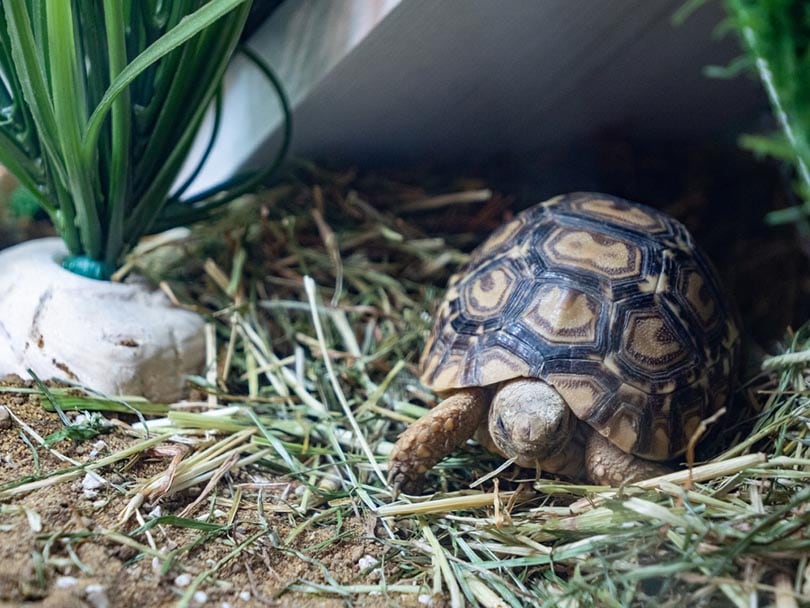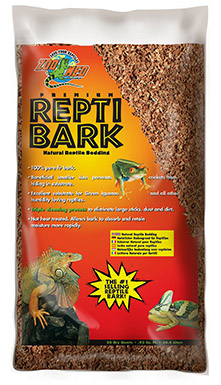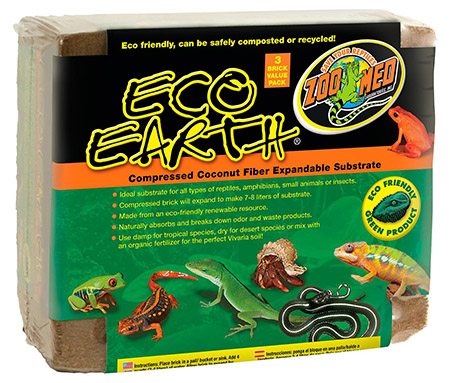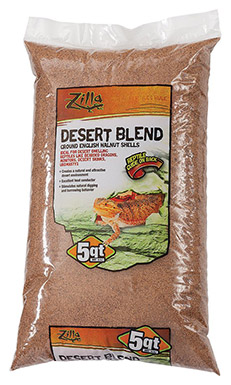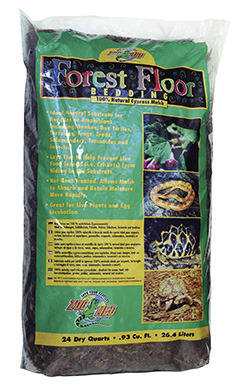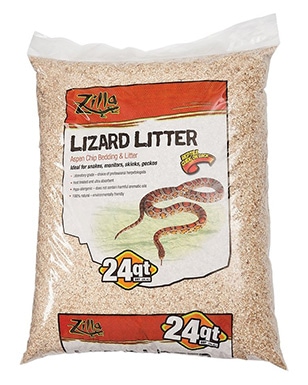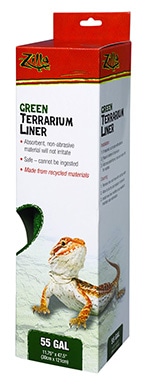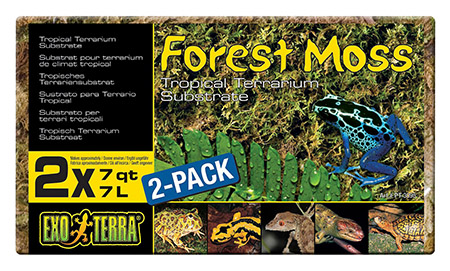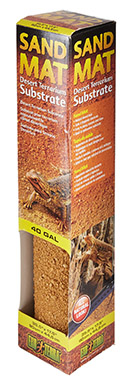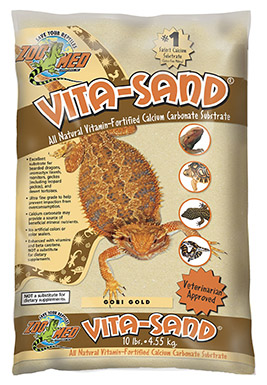Tortoises usually spend the first year or so of their life in an indoor terrarium before gradually spending more time outdoors until they reach about six years old when they can be left outdoors most of the time. Whenever your tortoise is in its terrarium, it will need a decent substrate or bedding.
The substrate can impact the temperature and humidity of the whole terrarium. Some can be uncomfortable on your little shelled friend’s feet and may even cause shell rot and could lead to impaction. There are many options when it comes to substrate: many materials, even different types of substrate, and different manufacturers that produce the items.
Below are reviews of 10 of the best tortoise beddings and substrates to help you whittle down the choice and find the one that suits you best, whether you’re looking for sulcata tortoise bedding or a substrate for your Hermann’s tortoise.
A Quick Comparison of Our Favorites of 2024
| Image | Product | Details | ||
|---|---|---|---|---|
| Best Overall |
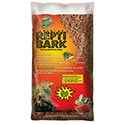
|
Zoo Med Premium Repti Bark Natural Fir Reptile Bedding |
|
Check Price |
| Best Value |
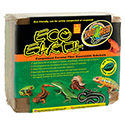
|
Zoo Med Eco Earth Compressed Coconut |
|
Check Price |
| Premium Choice |
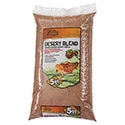
|
Zilla Ground English Walnut Shell |
|
Check Price |
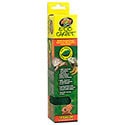
|
Zoo Med Eco Carpet |
|
Check Price | |

|
Zoo Med Forest Floor Natural Cypress Mulch Reptile Bedding |
|
Check Price |
The 10 Best Tortoise Beddings & Substrates
1. Zoo Med Premium Repti Bark Natural Fir Bedding – Best Overall
| Type: | Loose |
| Material: | Fir |
| Volume: | 24 qt |
Zoo Med Premium Repti Bark Natural Fir Reptile Bedding is loose bedding made from completely natural fir bark. It absorbs moisture and releases it into the terrarium environment, is reasonably soft underfoot, and it looks attractive in the bottom of the enclosure. It also allows some moderate burrowing. Tortoises burrow to escape predators in the wild, and to regulate temperature or simply get some privacy while in a terrarium.
The bark is reusable. Every two months, remove it from the terrarium, place it in boiling water for five minutes, and then drain the water off and allow the bark to dry before putting it back in with your tortoise. Its reusability means that this reptile bedding represents great value for money, although you may want to swap it out after a few washes.
While the bark is a good price and will last for many months with regular washing, it has not been heat-treated and Zoo Med doesn’t use chemical cleaners, which means that the occasional bag can contain mites.
2. Zoo Med Eco Earth Compressed Coconut – Best Value
| Type: | Compressed substrate |
| Material: | Coconut husks |
| Volume: | 3 x 7–8 liters |
Zoo Med Eco Earth Compressed Coconut is a compressed substrate. This means that it is dehydrated and compressed before packaging. When you open it, and before use, it needs to be rehydrated by adding water and then wringing out. Once rehydrated, you are left with a loose substrate made from 100% natural coconut husks. It is very soft and gentle, offers some burrowing, and as well as weighing less for packaging, it takes up less room in the storage cupboard.
This pack contains three bricks, with each brick expanding to make 7 or 8 liters of loose substrate: enough to provide one inch of substrate in a 40-gallon tank. Compressed substrate usually works out cheaper than loose, although it does look like you’re getting less when you first open the packaging, and with the low price of the Zoo Med Eco Earth Compressed Coconut substrate, this is our choice as the best tortoise bedding and substrate for the money.
If you have a small tank setup, it is very difficult to break the substrate down and only rehydrate part of the brick, which means that it can prove wasteful if the tank capacity is anything less than 40 gallons. It can take a very long time to dry properly for use.
3. Zilla Ground English Walnut Shell – Premium Choice
| Type: | Loose substrate |
| Material: | English walnut shell |
| Volume: | 5 qt |
Zilla Ground English Walnut Shell is recommended as a replacement for sand for desert dwellers but is also suitable for tortoises, especially desert species. It is easy to dig and scratch, looks good in a desert terrarium, and conducts heat well. It should only need replacing every month, although this will depend on how dirty your tortoise is and how effective your cleaning regimen. When fresh, it has a lovely natural smell from the walnuts, too, and it is quick and efficient to clean and swap out.
It is quite expensive, especially because it can’t be reused like the Repti Bark in top spot and because you need between one and two inches of the substrate on the bottom of your terrarium.
4. Zoo Med Eco Carpet
| Type: | Substrate carpet |
| Material: | Recycled plastic bottles |
| Volume: | 10 gallons |
Loose substrates allow tortoises to dig and can mimic a real life environment in an indoor terrarium. However, they can also be difficult to clean and expensive if you have to clear them out often. Substrate carpets represent an alternative that is easier to put in the terrarium, easier to remove, and because they can usually be washed and put back in, they work out cheaper in the long run as well as during the initial purchase.
This kind of substrate cannot be ingested by your pet, although this is less of a problem with tortoises and more of a problem with bearded dragons. It is soft and non-abrasive and it is made from recycled plastic bottles, which means that it is also environmentally friendly.
The substrate carpet is easy to maintain, inexpensive over the long term, and it can be washed and replaced so you don’t have to keep buying and storing replacements. However, natural substrate tends to look better in the terrarium, and tortoises do enjoy digging, albeit only shallow hides, and they will obviously be unable to do this when the substrate is carpet.
5. Zoo Med Forest Floor Natural Cypress Mulch Reptile Bedding
| Type: | Loose substrate |
| Material: | Cypress mulch |
| Volume: | 24 qt |
Zoo Med Forest Floor Natural Cypress Mulch Reptile Bedding is 100% natural cypress mulch. It lets you closely mimic a forest floor look in a terrarium, and it retains moisture to offer humidity in the tank, which is especially beneficial for tropical tortoises. Like most natural substrates, it smells good when you put it in the tank, although there is no guarantee it will retain a pleasant smell after a few weeks of use.
Because it is a loose, soft substrate, it also allows your little one to dig and burrow at will. It is very reasonably priced and has not been heat treated. Heat treatment is used as a method of cleaning and sterilizing substrate, but it also prevents the resulting bedding from properly retaining moisture, therefore limiting its capability to increase the humidity within the tank.
The texture of the mulch and its ability to retain moisture means that it can be difficult to clean, and because it is a wood mulch there are some sharp edges and rougher individual pieces of bedding.
6. Zilla Lizard Litter Aspen Chip
| Type: | Loose substrate |
| Material: | Aspen chips |
| Volume: | 24 qt |
The Zilla Lizard Litter Aspen Chip is a natural aspen chip substrate. As wood chips, it is very absorbent, which means that it will suck up moisture and can be used in humidity control within a terrarium environment. It has a woody smell and looks reasonable in the bottom of the tank, although it doesn’t mimic the floor of a rainforest or tropical location. This reasonably priced substrate has been treated, which means that there shouldn’t be a problem with mite infestations, although this has occurred on rare occasions.
Although your tortoise can burrow down into these chips, they tend to fall back and do not retain the burrowed shape like some other substrate materials do but it is an environmentally friendly, natural substrate that is reasonably priced and relatively easy to clean.
7. Zilla TerrariumLiner
| Type: | Substrate carpet |
| Material: | Recycled materials |
| Volume: | 55 gallons |
Terrarium liners are more convenient and simpler to use than loose substrate and, in most cases, they can be washed and reused, which means that they also represent good value for money. The Zilla Terrarium Liner is made from recycled materials and treated with an enzyme that helps to keep odors down to a minimum. Because it is a solid carpet, it cannot be ingested by your tortoise, either. The carpet can be easily washed. Remove it every month or so and run it under a cold tap to keep it looking and smelling fresh.
However, like all liners, it does not allow for digging or burrowing and it doesn’t mimic the natural environment that your tortoise hails from. Another problem with carpets and liners is that they are designed to fit standard terrarium sizes, but there are many other dimensions used in cage design. It is a good idea to choose a size larger than you need and then cut it down to match the exact length and width of your setup.
8. Exo Terra Forest Moss Tropical Terrarium Reptile Substrate
| Type: | Compressed substrate |
| Material: | Moss |
| Volume: | 2 x 7 qt |
Exo Terra Forest Moss Tropical Terrarium Reptile Substrate is a compressed natural moss. This means that before you use it, it will need rehydrating.
Add water, ensure that the moss is adequately soaked, and then remove it and let it dry. If you use too little water, it can be dusty and unappealing for your tortoise. If you use too much water or do not wring the water out properly, it will go moldy.
Once rehydrated, this is a very absorbent substrate which is good for humidity control but means that it can be difficult to clean out properly, and it has a very strong and somewhat unpleasant odor that will deter a lot of owners, not to mention their tortoises.
9. Exo Terra Sand Mat Desert Terrarium
| Type: | Substrate carpet |
| Material: | Sand |
| Volume: | 40 gallons |
The Exo Terra Sand Mat Desert Terrarium is a substrate carpet roll that is suitable for standard 40-gallon tanks and ideally suited to desert tortoises. Carpets are easier to add to the tank, although you may need to cut them down to match the exact dimensions of your own terrarium setup.
A sand carpet should avoid the possibility of impaction that comes when a tank inhabitant accidentally ingests loose sand, and it is easy to remove when it needs replacing. This one does mimic the appearance of a desert floor.
However, while some liners have the benefit of being washable, this one does not, so it will need removing and replacing completely when it is dirty. This is especially true because the roll, which is essentially the same as sandpaper, is very difficult to clean. Also, it is expensive compared to other liners and the bits of sand do break or rub off, which still leaves the problem of possible accidental ingestion.
10. Zoo Med Vita-Sand All Natural Vitamin-Fortified Calcium Carbonate Substrate
| Type: | Loose |
| Material: | Sand |
| Volume: | 10 lb |
Zoo Med Vita-Sand All Natural Vitamin-Fortified Calcium Carbonate Substrate is a natural sand substrate that has been fortified with vitamins and minerals to help improve your pet’s intake of beta carotene. It is suitable for desert tortoise species and does not contain artificial colors or color sealers.
However, the substrate is expensive and while it doesn’t contain artificial colors, it does stain everything that touches it, which can include your tortoise’s feet and belly, as well as the items you put inside. The sand is very fine, which can cause dust clouds to form, especially if your tortoise enjoys a good dig or burrowing session. It is quite easy to clean, however, and it doesn’t have the strong smell that other sand substrates can have.
Buyer’s Guide: Selecting The Best Tortoise Beddings & Substrates
Substrate is the material that is placed on the base of a terrarium or tank and is meant to mimic the natural surroundings of a tortoise’s habitat. Considering there are around 50 different species of tortoise, all of which hail from different parts of the world, it is no surprise that different tortoises appreciate different types of bedding.
Although you might struggle to find substrates that are specifically targeted at tortoises, they can use reptile bedding that includes wood chips, mulch, and sand. You can also find alternatives like substrate carpet. These are made to closely mimic the floor but are easier to add to the tank and are often reusable.

Types of Substrate
There are many different materials used in the manufacture of tortoise and reptile substrate, and each has its own pros and cons. If you are an experienced tortoise owner, you may already have a favorite, as well as those that you avoid. Below are some of the most common substrate types that are available and that have made it into our list.
Sand
Sand obviously closely mimics the terrain of deserts and arid areas. It is a very fine grain, and while it is popular with some owners, it does pose certain problems.
The biggest problem is that of impaction. Tortoises may not be as prone to impaction as lizards like bearded dragons, but it is still a risk. It is caused by the accidental ingestion of sand when they are eating. Sand cannot be digested so it essentially sits at the bottom of the gut and can cause serious gastrointestinal problems in your tortoise.
Another problem with the fine grains of sand is that while it is possible to dig and move sand around, it tends to fall back down. Tortoises do like to burrow, but burrowing sand is very difficult.
Soil
Soil is another substrate that is thought to closely mimic that of a tortoise’s natural terrain. It allows for digging and retains its shape once a hole has been dug, certainly better than sand does.
Sterilized soil has been heat-treated, which should get rid of any mites or other possible infestations that could pose a problem for your tortoise.
Again, there are some problems with soil as a substrate, however. First, it gets muddy when it is wet. This makes it hard, difficult to dig, and messy.
Another problem is cleaning because it can be difficult to spot tortoise poop in amongst muddy soil clumps.
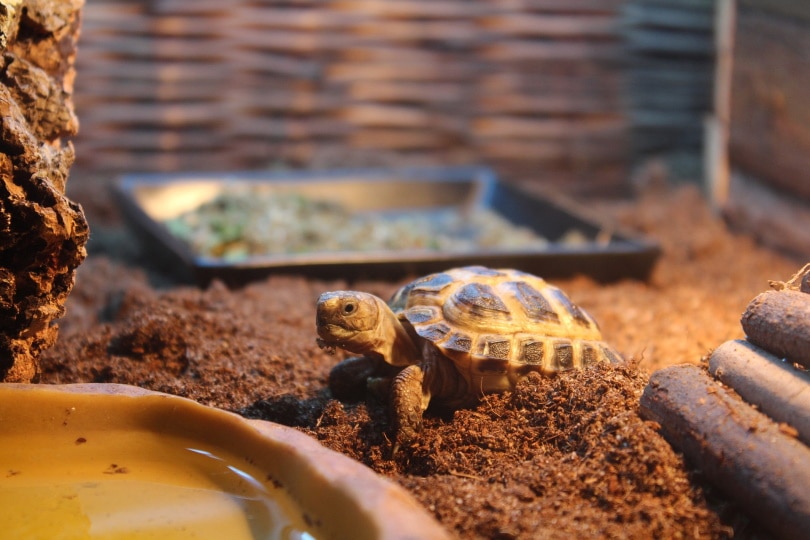
Wood Chips
Wood chips look good and they tend to be natural. Some chips have a wonderful natural smell to them as well, at least when they’re first put in the terrarium. Large chips can be washed and replaced, although you do need to ensure that they are thoroughly dried before being replaced or they can become moldy.
Other problems include the potential for sharp wood chips causing pain and injury to your tortoise’s feet and belly, and even the possibility that your tortoise could accidentally eat one of these sharp pieces.
Carpets
Carpeted substrate comes in a roll or sheets and is usually designed to meet the dimensions of standard terrarium sizes. You unroll the carpet, put it in the bottom of the terrarium, and then add hides and other items. When the carpet is dirty, it is removed and either washed and reused or thrown away and replaced.
Carpets can be made from synthetic or natural materials, with the preference being for natural carpets. They can mimic sand, forest, or soil floors, and the reusable variants are inexpensive because they can be washed several times before they need to be thrown away.
However, some carpets, especially sand carpets, are difficult to clean and the hooked material can actually snag on your tortoise and cause pain and injury.
Compressed Substrate
A compressed substrate is usually made from a loam soil material or moss. It is dehydrated and packed before sending and when you want to use it, you need to first rehydrate it and then dry it. This process can take some time and it requires practice to make sure that you get it right every time, but compressed substrate costs less to package and ship, so it can cost you less at the till. It is also more convenient to store in the back of a cupboard somewhere.
However, if you don’t use a whole brick, it is very difficult to store part of the compressed substrate until you need it, and you do need to get the rehydration process just right. If you don’t use enough water, it can be dusty. If you use too much water, the substrate can get moldy.

How Much Substrate Do You Need?
Your terrarium should be carefully monitored to ensure that your tortoise has ideal temperature and humidity conditions. As such, this prevents the need to burrow for temperature control, but tortoises do still enjoy digging. As such, many owners like to provide enough substrate that they can comfortably dig down at least some way.
To allow for adequate digging, you will need to provide substrate at a depth of about two inches, but you don’t have to do this in the whole terrarium. You could provide a digging area in one corner or one-quarter of the tank, and limit the amount of substrate to one inch in the rest of the enclosure. The substrate should cover the whole floor of the tank, though.
How Often Should It Be Changed?
There are a lot of factors that will determine how often substrate needs changing. The temperature and humidity of the tank, what you feed your tortoise and where, and even how messy your individual pet is. But, in general, you should look to replace a loose substrate every two or three weeks and ensure that you remove poop every day.
If you are using a substrate that needs washing and replacing, you may need to have enough for two rotations so that you can wash and dry one substrate while the other is in the tank. Some carpets can be left down for longer, but you should get a good idea of how often your chosen substrate needs changing quite soon after adding it to the tank.
Conclusion
Tortoises need a clean and healthy environment in which to live and thrive. This not only means ensuring the right temperature and humidity levels, as well as providing decent food and water, but it also means using a reliable substrate. Above, we have included reviews of some of the best tortoise substrate products to help you find the one that best fits your requirements and those of your tortoise.
We found Zoo Med Premium Repti Bark Natural Fir Reptile Bedding to offer the best combination of natural materials and competitive pricing, while Zoo Med Eco Earth Compressed Coconut represents a really good, low-cost alternative that comes in compressed blocks.
See also:
- 10 Chameleon Myths and Misconceptions You Need To Stop Believing Now!
- How Often Do Chameleons Shed? And Why Do They Do It?
- Iguanas For Sale: Breeders List in the USA, UK, Canada, & Australia
Featured Image Credit: Peter Austin, Shutterstock
